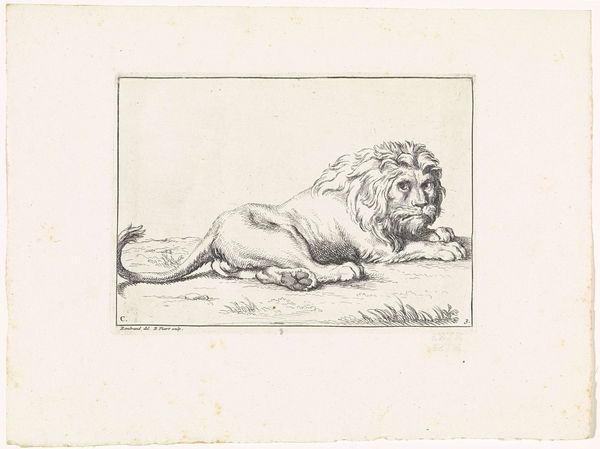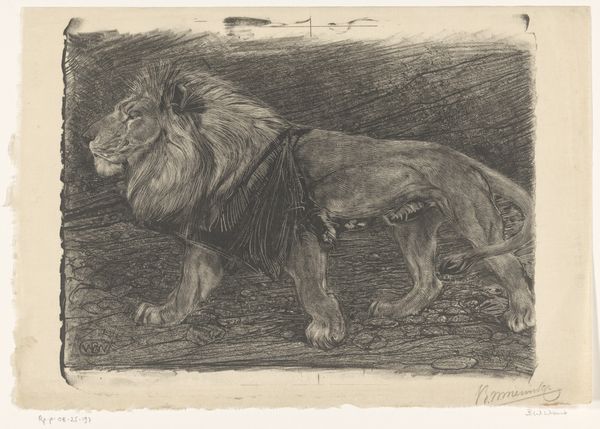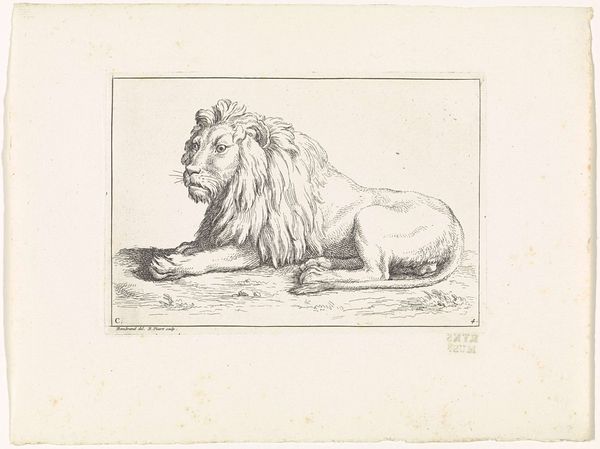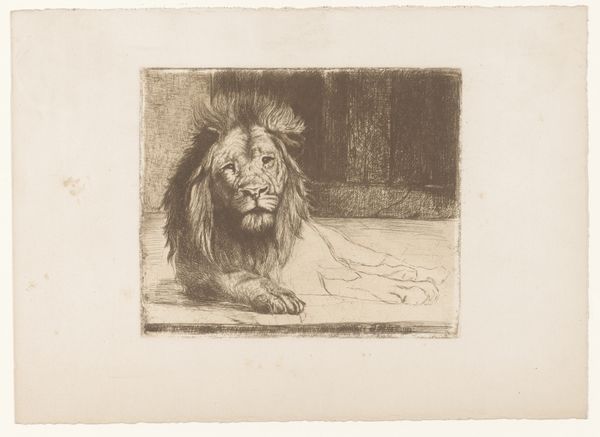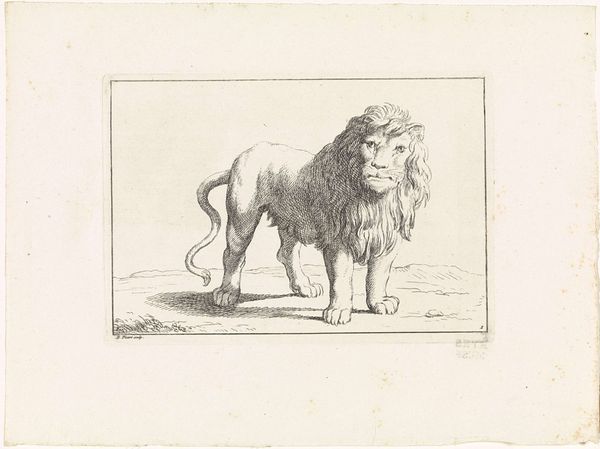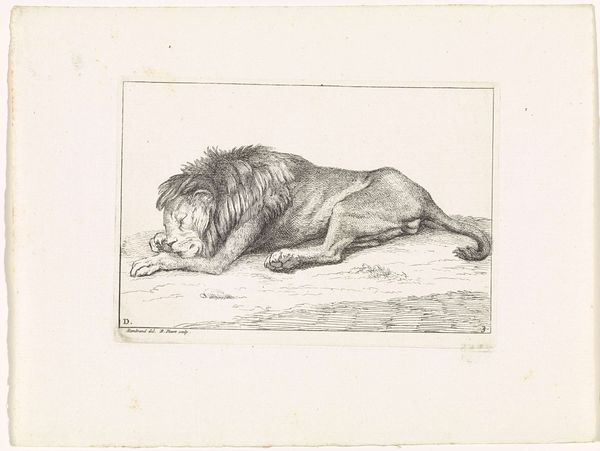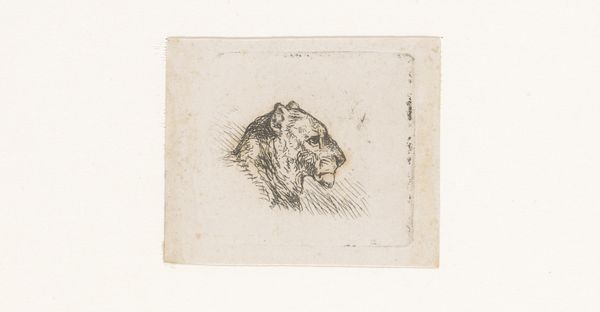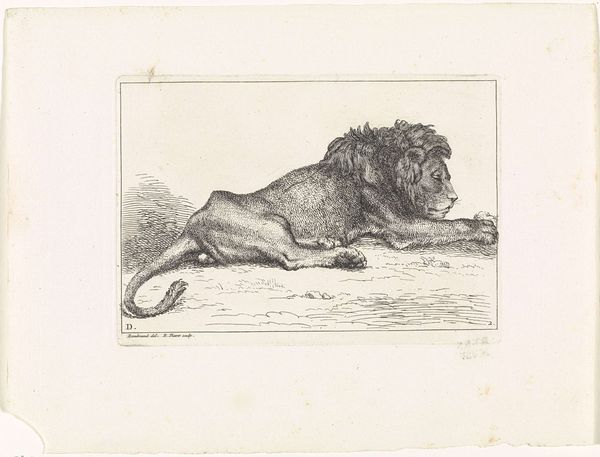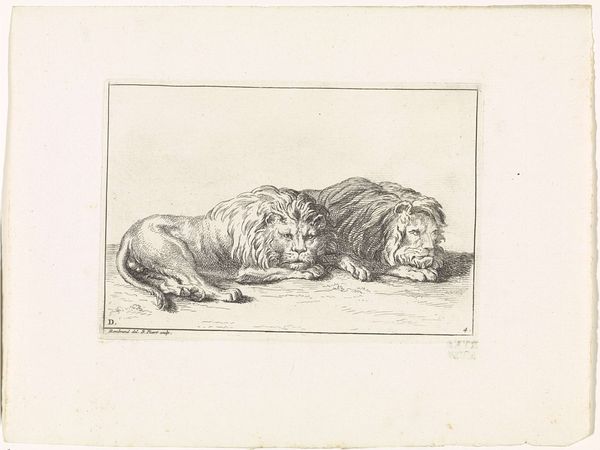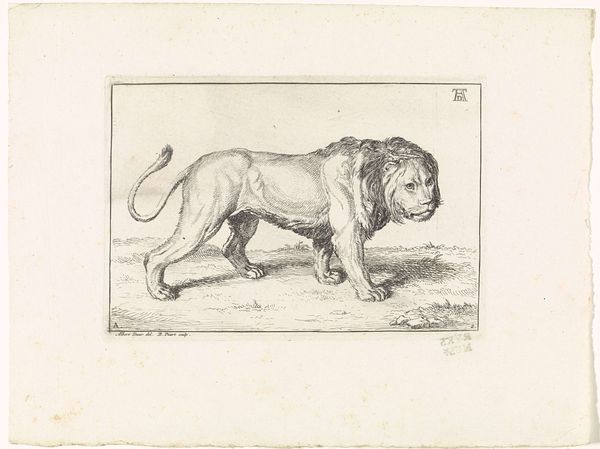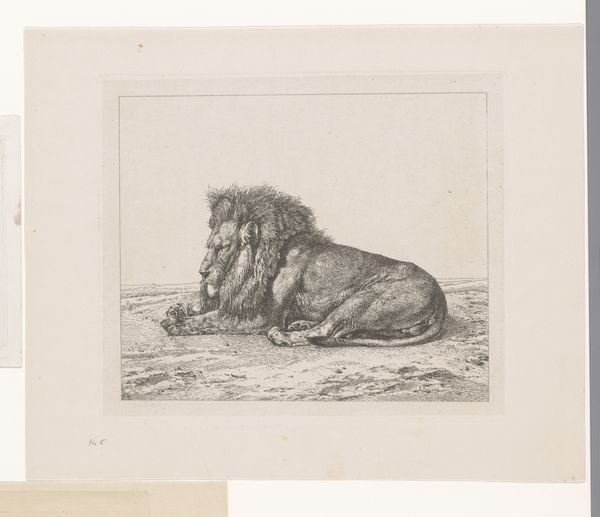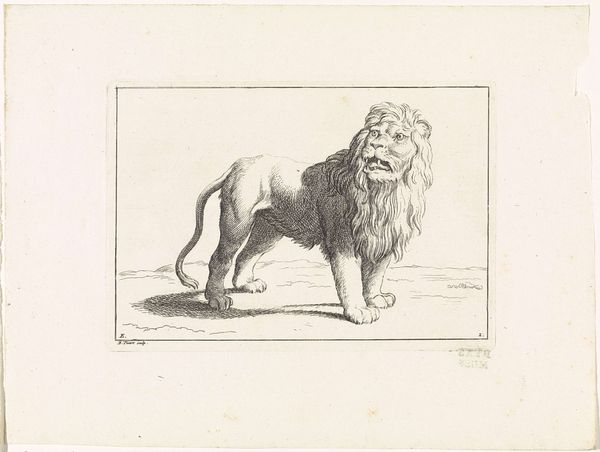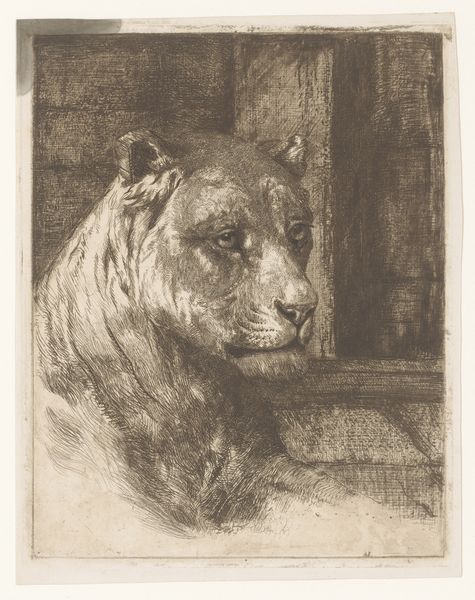
print, etching, engraving
#
animal
# print
#
etching
#
landscape
#
line
#
engraving
#
realism
Dimensions: height 87 mm, width 129 mm
Copyright: Rijks Museum: Open Domain
Ignace-Joseph de Claussin created this etching of a sleeping lion sometime before his death in 1844. The etching process involves using acid to cut into a metal plate, which is then inked and pressed onto paper to create an image. The material qualities of the metal plate and the acid’s bite determine the depth and darkness of the lines, giving the lion its textured fur and powerful form. Look closely, and you can almost feel the weight and density of the lion’s body. The etching technique itself has a rich social history. It allowed for the relatively easy and inexpensive reproduction of images, making art more accessible to a wider audience during the 19th century. De Claussin's choice of this medium reflects a shift towards a more democratic art world, where craft and accessibility intersected with fine art traditions. It underscores the importance of considering the means of production in understanding an artwork’s cultural significance.
Comments
No comments
Be the first to comment and join the conversation on the ultimate creative platform.
